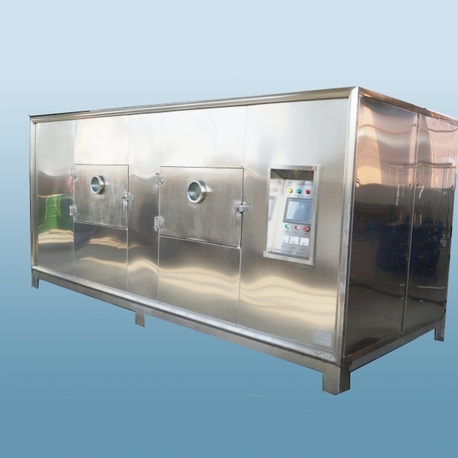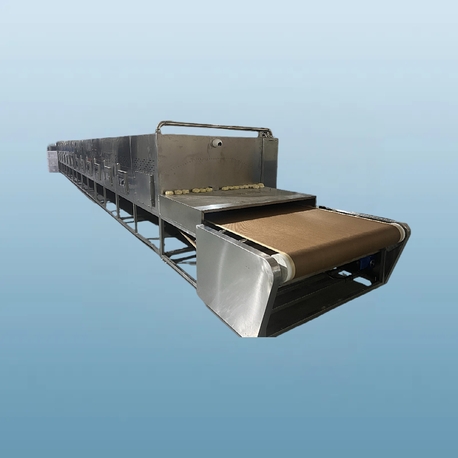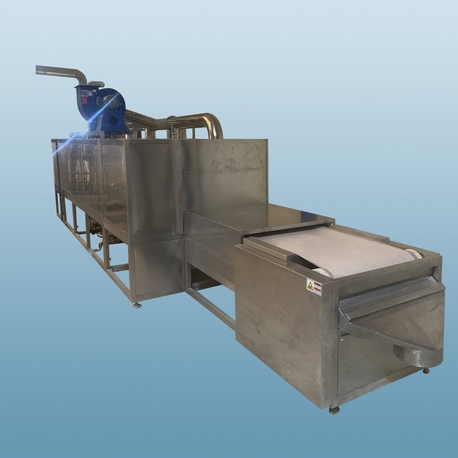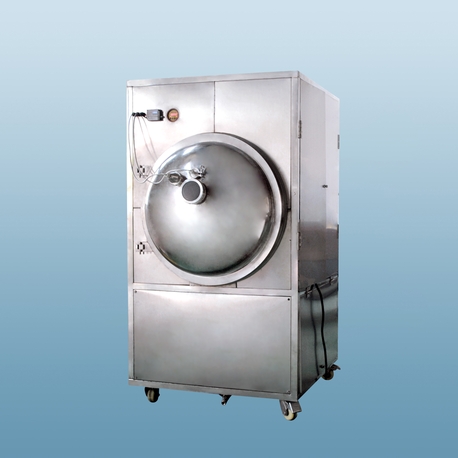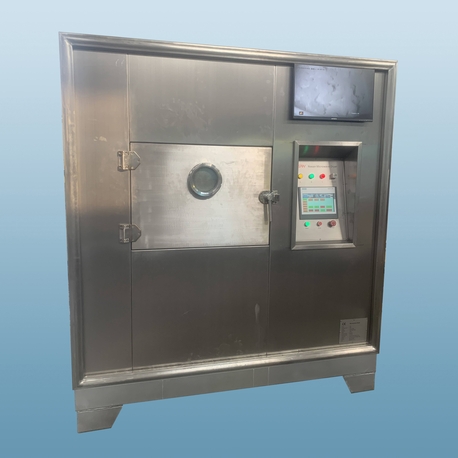If you think a commercial dehydrator is just for making dried fruit snacks, think again. This powerhouse of industrial equipment is a silent workhorse in dozens of industries, from pharmaceuticals to food manufacturing. By precisely removing moisture, it preserves products, extends shelf life, and creates entirely new ingredients. Whether you're a business owner looking to scale production or an engineer sourcing equipment, understanding the capabilities of a modern commercial dehydrator is crucial. This article dives deep into seven key applications, the operational workflow, and how selecting the right machine, like those from Nasan, can transform your commercial output.

What Exactly is a Commercial Dehydrator and How Does It Work?
At its core, a commercial dehydrator is an engineered system designed to remove water from materials through the application of controlled heat and airflow. Unlike simple residential dehydrators, their industrial counterparts are built for durability, high capacity, and precise process control. They are essential for preventing microbial growth, reducing weight for shipping, and preparing materials for further processing.
The basic principle involves circulating warm, dry air across the product. This increases the water vapor pressure at the product's surface, causing moisture to evaporate. The machine then exhausts this moisture-laden air, continuously replacing it with dry air. The key to a high-quality commercial drying process lies in the precise control over temperature, airflow, and humidity levels within the chamber.
The Inner Workings: A Standard Operational Workflow
While specific cycles vary by product, the operation of a commercial dehydrator typically follows a structured process:
Loading: Products are evenly arranged on trays or shelves to ensure consistent airflow. Proper loading is critical; overcrowding can lead to uneven drying and spoilage.
Parameter Setting: The operator sets the key parameters: temperature, drying time, and airflow rate. These settings are determined by the product's nature, thickness, and initial moisture content.
The Drying Cycle: The machine closes, and the cycle begins. Heated air is circulated uniformly throughout the chamber. Sophisticated units have multiple zones to accommodate different products simultaneously.
Monitoring & Adjustment: Advanced industrial drying systems continuously monitor internal conditions, making micro-adjustments to maintain the perfect environment for the specific load.
Cooling & Unloading: Once the target moisture level is reached, some systems include a cooling phase to stabilize the product before it is unloaded and packaged.
7 Key Industries and Applications for Commercial Dehydrators
The versatility of a commercial food dehydrator and its industrial-grade sibling is vast. Here are seven major areas where they deliver immense value.
1. Food Processing and Preservation
This is the most common application. A commercial food dehydrator is used to create shelf-stable products and ingredients.
Produce: Herbs, fruits (like apples and mangoes), and vegetables (like onions and tomatoes).
Meat: Creating jerky for the snack food industry.
Grains & Pasta: Accelerating the drying process for pasta and grains to ensure stability.
2. Pharmaceutical and Nutraceutical Production
In this highly regulated field, a commercial dehydrator is used for drying medicinal herbs, plant extracts, and other active pharmaceutical ingredients (APIs). Precise temperature control is non-negotiable to preserve the efficacy and potency of heat-sensitive compounds.
3. Chemical and Industrial Manufacturing
Many chemical products and industrial materials are processed in a commercial dehydrator. This includes drying crystals, powders, pigments, and certain types of plastics. The goal is often to achieve a specific moisture content for chemical stability or to prepare a product for milling and packaging.
4. Biomass and Waste Processing
Dehydrators play a role in sustainable practices by reducing the volume and weight of organic waste and biomass. Drying sludge, manure, or agricultural waste makes it easier to transport, dispose of, or convert into biofuels.
5. Textile and Paper Production
In textile manufacturing, a commercial dehydrator can be used to dry fabrics after dyeing. In the paper industry, it's integral to the sheet-forming process, removing water from pulp to create strong, durable paper products.
6. Laboratory and Research Applications
R&D labs across various sectors use smaller-scale commercial drying cabinets for testing material properties, developing new products, and conducting quality control checks. The need for repeatability and precision is paramount.
7. Creating Value-Added Products
Many small businesses use a mid-sized commercial food dehydrator to create value-added goods. Think of dehydrated soup mixes, backpacking meals, powdered spices, and fruit leathers. This allows producers to capture more value from raw ingredients and reduce food waste.
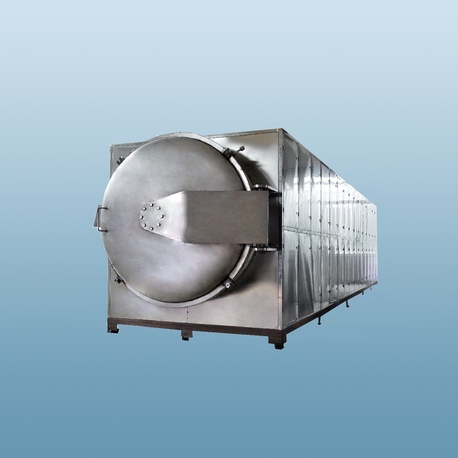
Choosing the Right Commercial Dehydrator: A Solution-Oriented Guide
Selecting the wrong equipment can be a costly mistake. Here are key factors to consider when investing in a commercial dehydrator:
Capacity and Throughput: Calculate your required daily or weekly output. This determines the size and number of units you need.
Heat Source and Efficiency: Options include electric, gas, or steam. Consider your facility's utilities and the long-term cost of operation. Energy-efficient models, like some offered by Nasan, can significantly reduce overhead.
Control System: Do you need simple dials or a programmable logic controller (PLC) with data logging for compliance and quality assurance?
Airflow Design: Horizontal or vertical airflow? The right design depends on your product density and tray configuration, ensuring even drying without "hot spots."
Construction and Materials: For food or pharmaceutical use, stainless steel is often mandatory for its corrosion resistance and ease of cleaning.
Brands that focus on robust engineering, such as Nasan, build their commercial dehydrator models with these industrial demands in mind, offering durability and consistent performance under heavy use.
A commercial dehydrator is far more than a simple drying appliance; it is a critical piece of process engineering that drives efficiency, creates new products, and preserves quality across a stunning range of industries. From the herbs in your tea to the medicine in your cabinet, the impact of this technology is everywhere. By understanding its applications, operational flow, and selection criteria, businesses can make an informed investment that pays dividends in product quality and operational scalability. As a provider of robust industrial solutions, Nasan understands these complex requirements, designing equipment that meets the rigorous demands of modern commercial drying.
Frequently Asked Questions (FAQs) About Commercial Dehydrators
Q1: What is the main difference between a commercial dehydrator and a residential one?
A1: The primary differences are scale, construction, and control. A commercial dehydrator is built for continuous, high-volume operation with durable materials like stainless steel. It offers precise control over temperature and airflow for consistent, repeatable results, whereas residential models are designed for intermittent, smaller-batch use with less precision.
Q2: How do I clean and maintain my commercial dehydrator to ensure its longevity?
A2: Regular maintenance is crucial. Daily tasks include wiping down trays and the interior chamber. A weekly deep clean might involve dismantling and cleaning air intake filters and fans. Always follow the manufacturer's specific guidelines. Using a commercial dehydrator with a design that prioritizes easy access for cleaning, like seamless interiors, will significantly reduce downtime.
Q3: Can a commercial food dehydrator be used for non-food items?
A3: While a commercial food dehydrator is designed and constructed with food-safe materials, it can technically dry non-food items like herbs for potpourri or certain flowers. However, it is strongly recommended to never use the same machine for both food and non-food/chemical items due to the risk of contamination. For industrial materials, a dedicated commercial dehydrator is essential.
Q4: What are the most common mistakes people make when operating a commercial dehydrator?
A4: The most common mistakes are overloading the trays, which restricts airflow and causes uneven drying; using an incorrect temperature that can cook instead of dry the product (case-hardening); and not pre-treating certain foods, leading to oxidation and color loss. Proper training on the specific commercial drying cycle for each product is key to avoiding these issues.
Q5: How do I calculate the capacity and size of the commercial dehydrator I need for my business?
A5: Start by calculating your peak production needs in pounds or kilograms of raw product per day. Then, determine the average drying time for that product. The capacity of the commercial dehydrator you need is (Daily Raw Product Weight) / (Number of Drying Cycles Per Day). It's always wise to invest in a unit with 15-20% more capacity than your current calculations to allow for future business growth.


